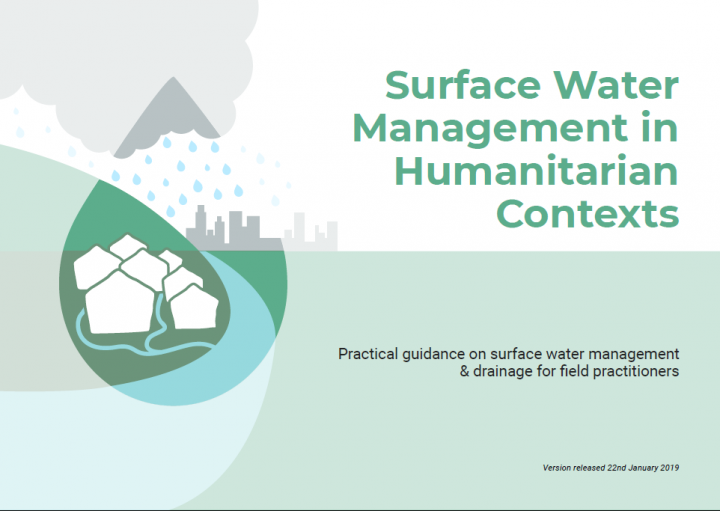Surface Water Management in Humanitarian Contexts - Practical guidance on surface water management & drainage for field practitioners
ARUP et al. (2019)

Published in: 2019
Pages: 70
Publisher:
ARUP
Author:
ARUP et al.
Uploaded by:
SuSanA Admin
Partner profile:
common upload
1089 Views
45 Downloads
Appropriate and adequate surface water management is essential to humanitarian response. To date, there has been limited guidance available to practitioners summarized as follows:
Little information beyond basic assessment of flood risk and implications of standing water on a site.
Limited guidance on surface water quality with most of the information focusing on the management of water quantity; and few mitigation techniques and their suitable use have been widely publicized.
This guidance seeks to address this by:
-Focusing the outcome of good surface water management on health and wellbeing of people and the environment, through considering both water quality and quantity;
-Minimising a variety of closely linked vulnerabilities;
-Maximising opportunities available, to provide wider benefits to each site; and
-Promoting seven prevention and mitigation techniques to try to manage surface water as close as possible to the -Point where it enters the system whilst also considering the wider catchment. These seven techniques relate to eleven components listed in the guide.
Bibliographic information
ARUP et al. (2019). Surface Water Management in Humanitarian Contexts - Practical guidance on surface water management & drainage for field practitioners. ARUP
Filter tags
English Europe & Central Asia Guidelines and manuals Politicians and local decision makers















